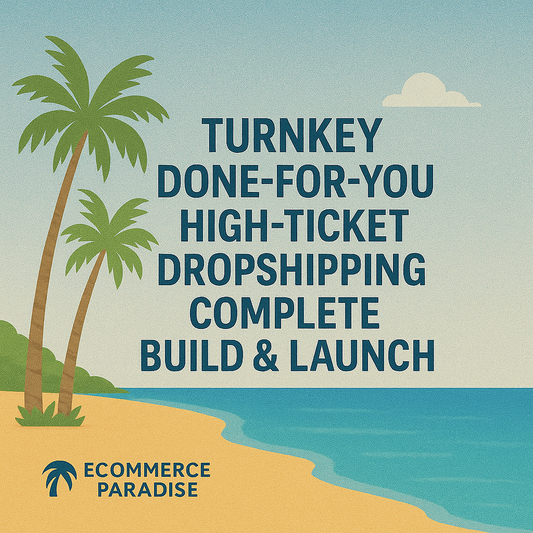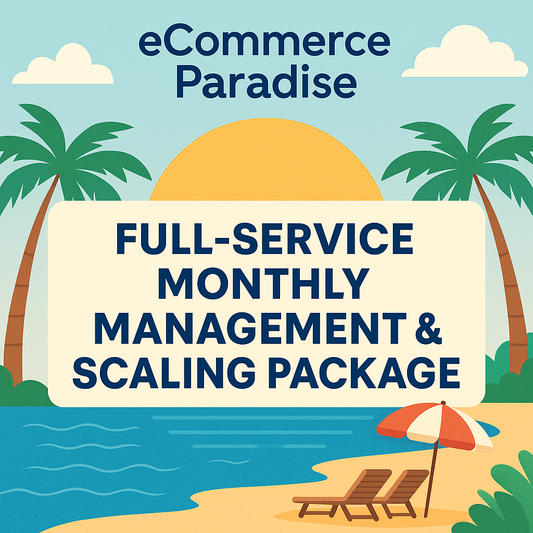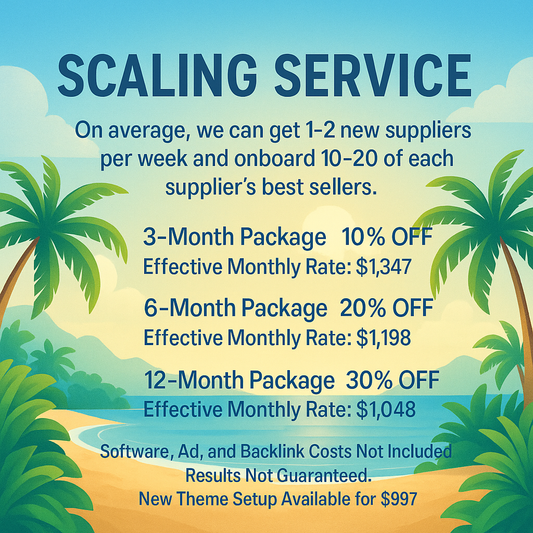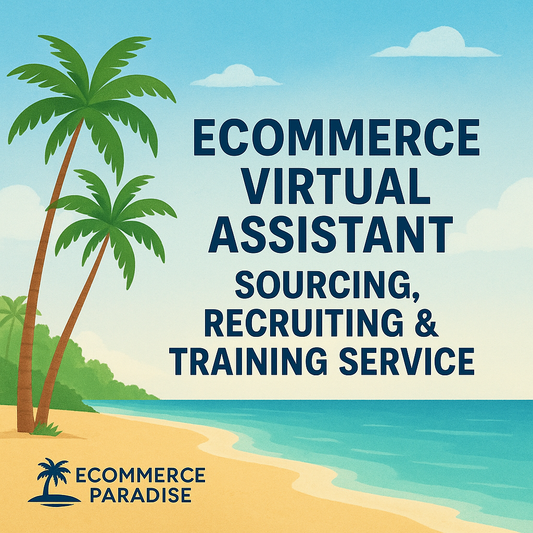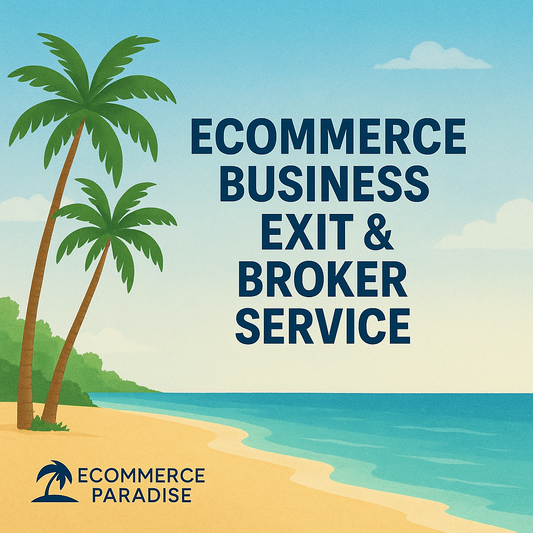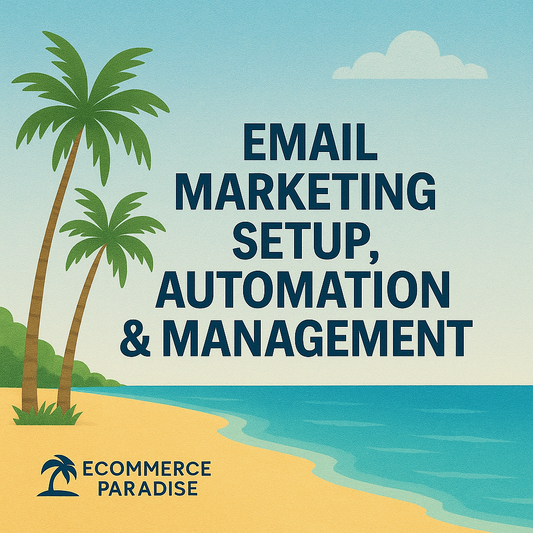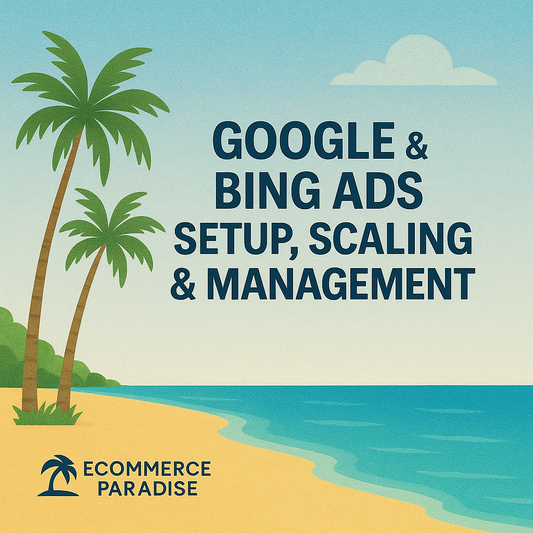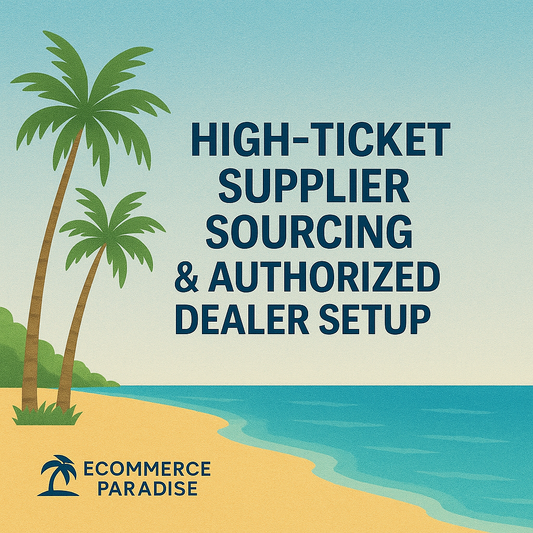The Ultimate Guide to Ecommerce SEO
Everything You Need to Know to Grow Your Shopify Store Organically
If you want your Shopify store to consistently attract free traffic, generate sales, and grow long-term without relying entirely on ads — you need SEO.
But not just any SEO. You need a systematic, ecommerce-specific SEO strategy built for how people shop online and how search engines crawl ecommerce websites.
This guide breaks down every essential piece of the puzzle — based on years of working with high-ticket ecommerce stores, niche Shopify shops, and fast-growing DTC brands.
Let’s get into it.
Keyword Research: Start with Buyer Intent
Before you optimize anything — your homepage, your collections, your product pages — you need to understand exactly what your ideal customers are typing into Google.
Keyword research is the foundation of SEO. It’s market research for your content.
The best keywords for ecommerce aren’t just high-volume generic phrases like “skateboards” or “solar panels.” They’re long-tail, buyer-intent keywords — the kind people search when they’re close to purchasing.
Examples:
-
“best solar kits for off-grid living”
-
“bluetti 3000W solar generator kit”
-
“top mobility scooter for elderly travelers”
-
“how to install a backyard skate ramp”
Use tools like:
-
Ubersuggest
-
Ahrefs
-
Google Keyword Planner
-
Keywords Everywhere
Look for:
-
100–1000 monthly searches
-
Low competition
-
High commercial intent
Then, map those keywords to your content:
-
Homepage: brand and category-level terms
-
Collection pages: category keywords
-
Product pages: specific long-tail product names
-
Blog posts: informational and comparison keywords
This becomes your SEO blueprint moving forward.
Site Structure: Organize for Google and Shoppers
A messy store layout doesn’t just confuse customers — it confuses search engines.
Your site structure should be:
-
Flat (important pages within 2–3 clicks from the homepage)
-
Clear (main collections featured in your top menu)
-
Logical (URLs and menus match the user’s search intent)
-
Internally linked (pages connect to related pages)
Bad example: Homepage → Shop Now → Filters → Product → No links out
Great example: Homepage → Collection → Product
Product → Blog Post → Related Collection
Blog Post → CTA → Collection Page
Use keyword-focused collection names, clean URLs, and content blocks on your collection pages. Don’t just display products — explain the value.
Add breadcrumbs, organize content into categories, and avoid orphan pages (pages with no internal links).
Google favors sites that are easy to crawl and understand.
On-Page SEO: Optimize Every Page
Every page on your site is a new opportunity to rank — if it’s optimized correctly.
Start with the essentials:
-
Title Tag: Unique, keyword-focused, under 60 characters
-
Meta Description: Compelling, includes keywords, under 160 characters
-
H1 Tag: Clear, 1 per page, matches the page’s purpose
-
Content: 150–300+ words per product page, 800–2000+ for blog posts
-
Alt Text: Describe each image with clarity and keywords when appropriate
-
URL: Short, clean, lowercase, and keyword-rich
-
Internal Links: Link to related products, collections, and blogs
Product page checklist:
-
Clear product title (H1)
-
Unique description (no manufacturer copy-paste)
-
Product specs, benefits, and use cases
-
Embedded FAQ or review snippets
-
Keywords used naturally in headings and copy
-
Images with descriptive alt text
-
Internal links to related products or guides
Don’t forget:
-
Every product and collection should have custom metadata
-
Avoid duplicate content across products or tags
-
Use structured headings (H1 → H2 → H3) in long-form content
Content Marketing: Drive Traffic with Blog Posts
Content is your long-term SEO engine.
With a smart content strategy, you can:
-
Rank for informational and comparison keywords
-
Build trust with potential buyers
-
Support product pages via internal links
-
Earn backlinks from other sites
-
Drive organic traffic consistently
Blog content ideas for ecommerce:
-
Buying Guides: “How to Choose the Right [Product]”
-
Comparison Posts: “[Brand X] vs [Brand Y]”
-
Best-of Lists: “Top 5 [Products] for [Use Case]”
-
How-To Guides: “How to Install Your [Product] Step-by-Step”
-
FAQs and Product Education: “What You Need to Know About [Feature]”
-
Customer Stories or Case Studies
Every post should:
-
Target one specific long-tail keyword
-
Include 800–2000+ words of helpful content
-
Link to at least 1–3 relevant product or collection pages
-
Include a CTA or banner to drive traffic to your store
Think of your blog as your top-of-funnel content hub.
Link Building: Build Authority with Backlinks
You can have the best content in your niche, but if no one links to it — Google won’t see your site as authoritative.
Backlinks (other websites linking to yours) are still one of the strongest SEO ranking factors.
You don’t need hundreds — just a few high-quality, relevant links from trusted sources.
How to earn backlinks:
-
Submit your store to ecommerce and niche directories
-
Reach out to bloggers or influencers for product reviews
-
Write guest posts on industry sites
-
Get featured in roundups or top lists
-
Respond to journalist queries via HARO (Help A Reporter Out)
-
Promote your best blog content on social and in outreach
Prioritize:
-
Links from relevant, niche-specific domains
-
Contextual in-content links (not footers or sidebars)
-
Anchor text that reflects your product or brand name
-
Backlinks to your homepage, collections, blogs, and top products
Quality > quantity.
Technical SEO: Clean Up the Backend
Even if your content is great, technical issues can hold your rankings back.
Use tools like Google Search Console, Screaming Frog, Ahrefs, or Shopify SEO apps to spot and fix backend problems.
Key areas to check:
-
Site speed (test with Google PageSpeed Insights or GTmetrix)
-
Mobile-friendliness (use Google’s mobile test)
-
Broken links (404 errors)
-
Proper redirects (301s for discontinued products)
-
XML sitemap submitted in Search Console
-
Robots.txt file is clean and not blocking important pages
-
Duplicate content from tags or variants
-
Structured data/schema for products, reviews, and FAQs
Install a schema app like JSON-LD for SEO to make it easier.
Make technical cleanup part of your monthly SEO routine.
Tracking & Optimization: Improve What’s Already Working
SEO is not one and done. It’s ongoing.
After you’ve launched and optimized, you need to track performance and iterate.
Use:
-
Google Analytics to track traffic, bounce rate, conversions
-
Google Search Console to monitor rankings, CTR, impressions
-
Ubersuggest or Ahrefs to track keyword positions
-
Rank tracking tools to monitor movement on target pages
Every month, check:
-
Top performing pages (double down on them)
-
Underperforming pages (optimize, expand, or refresh)
-
Pages with high impressions but low clicks (improve titles/meta)
-
Keywords you’re almost ranking for (push those higher)
-
Opportunities to add internal links to new content
Update blog posts, improve product page content, and continue building links to your best-performing assets.
SEO success compounds over time — if you keep at it.
Systemize SEO: Build a Scalable Process
The final step is to stop treating SEO like a one-time project — and start treating it like a repeatable growth system.
Here’s what a scalable SEO system looks like:
-
A monthly or quarterly content calendar
-
An SOP or checklist for publishing blog posts and launching products
-
Keyword research and optimization tasks assigned to a VA or team
-
Templates for product descriptions, FAQs, and alt text
-
Monthly traffic and performance reviews
-
Goals for content output, traffic growth, and backlinks earned
-
A process for updating old content every quarter
Once your system is running, you can:
-
Maintain consistent growth with minimal effort
-
Scale across multiple brands or stores
-
Outsource the work without losing quality
-
Focus on strategy instead of execution
This is how the best ecommerce brands grow on autopilot.
Final Thoughts
Ecommerce SEO takes time. But it also pays off for years to come.
Once your store is fully optimized — with a strong structure, great content, authority-building backlinks, and a technical foundation — you’ll attract free traffic from buyers actively searching for your products.
And when you turn that into a system, you’re no longer guessing.
You’re building traffic. Daily.
If you want help implementing this — or want to shortcut the process — we’ve got your back.
Download the Ultimate SEO Checklist
Book a Free SEO Strategy Call
Join Our SEO Course + Discord Membership
Let me know when you’re ready to convert this into a PDF or eBook.




